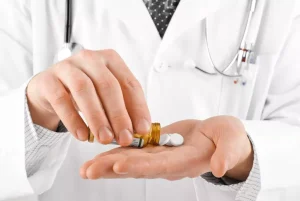
Impulsive attacks and angry outbursts occur suddenly, with little or no warning. Verbal outbursts or less severe physical attacks may still occur in between these times. The FHE Health team is committed to providing accurate information that adheres to the highest standards of writing.
- They were also required to respond to the Consideration of Future Consequence Scale (CFC).
- Anyone who’s lived with an alcoholic parent, partner or other close family member understands all too well what happens when their loved one’s personality changes suddenly as soon as they have a drink or two.
- If you’re concerned about your child’s risk of developing intermittent explosive disorder, talk to your healthcare provider.
National Institute on Alcohol Abuse and Alcoholism (NIAAA)

Remember, seeking support is crucial for managing Alcoholic Rage Syndrome and improving overall well-being. Remember, preventing Alcoholic Rage Syndrome requires self-awareness, support, and commitment to building a alcoholic rage syndrome healthier relationship with alcohol. Researchers estimate that approximately 1.4% to 7% of people have intermittent explosive disorder. Intermittent explosive disorder is one of several impulse control disorders.

Coping with Alcoholic Rage Syndrome
Furthermore, underlying mental health conditions might influence your trend towards angry outbursts. This is why speaking with a therapist can help identify the root cause of addiction. In addition, people with IED are at an increased risk for self-harm (self-injury) and suicide. Because of this, it’s essential to seek medical help as soon as possible if you feel you or a family member has intermittent explosive disorder.
Coping With Dry Drunk Syndrome
- Specifically, it found that problematic drinkers may be more likely to attend to aggressogenic stimuli while intoxicated, and that is, they were more likely to experience certain cues as aggressive.
- The outbursts of anger can lead to strained relationships, domestic violence, and a breakdown of trust.
- Another study of 249 heavy drinkers similarly found that alcohol intoxication predicted higher levels of IPV in those who reported low psychological flexibility (Grom et al., 2021).
- In other words, can we make our inner “Tammy” or “Jimmy” (or whatever name your boozy alter-ego might have) stay away for good?
- Bear in mind, the manner in which you approach this conversation is also important.
- They completed surveys assessing their endorsement of traditional masculine norms, use of thought suppression, and both trait and alcohol-related aggression.
This activates the stress response, which speeds up heart rate, respiration, and blood pressure, and increases body temperature. Stress also affects focus and attention abilities, and heightens energy while decreasing appetite and sleep functions. I’ve observed this pattern over several decades in helping clients deal with anger.
Intermittent Explosive Disorder
- They provide a platform for individuals to learn about the risks and consequences of alcohol on emotions, such as anger and aggression.
- If you feel uncomfortable discussing your concerns with a GP, you can approach the Frank website or helpline directly to seek guidance and assistance.
- One of the components during treatment for alcoholism is the psychosocial education piece.
- Alcoholic Rage Syndrome, also known as alcohol-induced aggression or alcoholic anger, is a distressing condition that plays a role in answering the question, why are alcoholics so mean?
– Collecting a detailed medical history, including an assessment of alcohol consumption patterns. If you or your child displays behavior that harms or endangers others, such as other people or animals, it’s important to find immediate care. However, according to studies, IED appears to be a long-term condition, lasting from 12 to 20 years or even a lifetime. Fluoxetine (a selective serotonin https://ecosoberhouse.com/ reuptake inhibitor, or SSRI) is the most studied medication for treating intermittent explosive disorder. Other medications that have been studied for IED include phenytoin, lithium, oxcarbazepine and carbamazepine. Because blackouts tend to occur at high BACs, they commonly stem from binge drinking, defined as a pattern of drinking that increases a person’s BAC to 0.08 percent or higher.


The connection between alcohol and rage can be understood by looking at changes in the brain. When we drink the alcohol in our bloodstream reaches our brain within about five minutes. As our blood alcohol concentration (BAC) elevates personality changes can become more extreme.
Most importantly, the person with the AUD should consider treatment, as rehab can aid not only the individual but also the family as a whole. However, the way you speak and interact with children also may lessen the impact of a parent with a SUD. Techniques that help to regulate stress and anxiety are essential coping tools that are useful in the rehab environment as well as life after rehab. These activities might include learning how to practice mindfulness meditation, yoga classes, therapeutic massage, acupuncture, deep breathing exercises, aromatherapy, and music and art therapy. Relapse is prevalent, with almost sixty percent of people having one major episode a year after completing treatment. But, anger problems are often cited as one of the main culprits of relapse among recovering alcoholics.




